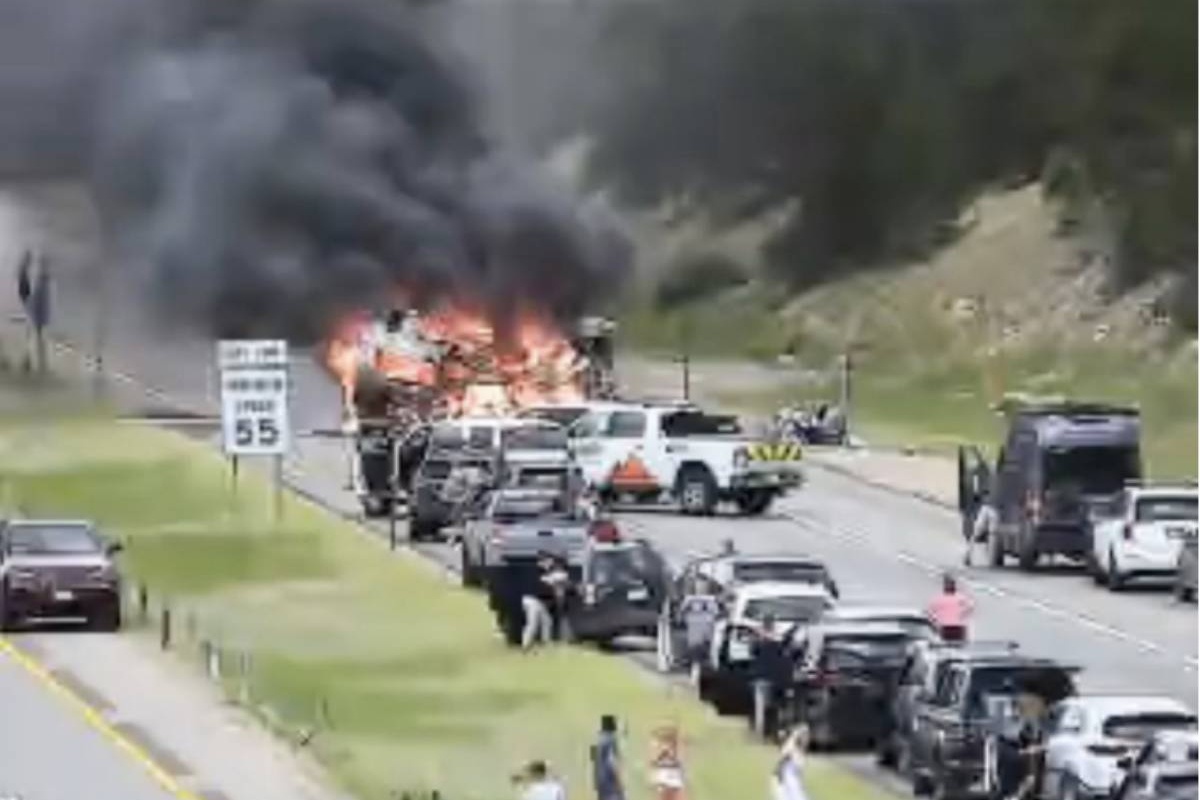
Most Colorado cities and farms get water from snowmelt in the Rockies. That’s not the case in Northeastern Colorado. This food-producing powerhouse depends on an ancient, underground reservoir called the Ogallala.
Ever since the Ice Ages, the Ogallala’s been slowly accumulating water. Modern farmers, though, pump so much water that this “timeless” aquifer is starting to run out. Someday up ahead, Northeast Colorado may have to curtail some crops, and some farm towns might become ghost towns.
Towns are few and far between vast expanses of short grass prairie in Northeastern Colorado. This semi-arid desert gets on average only 17 inches of precipitation every year.

But near the farming community of Wray, there’s a feedlot that depends on plenty of water. A few miles further away are mounds of freshly dug up potatoes and conveyor belts that hoist the spuds into trucks.
Around another bend, dinosaur-sized pivots watch over cornfields. Next spring, those giant sprinklers will spray enough water to grow row after row of leafy green stalks.
“Yuma County is one of the top two counties in the state, and sometimes ranked in the top 10 in the nation, for corn production,” says Deb Daniel, General Manager for the Republican River Conservation District.

This river basin springs from streams that bubble up from the Ogallala aquifer then flow east, starting in Northeastern Colorado around Sterling and Wray, and also around Burlington, near the Kansas border.
Daniel says the aquifer is how farmers in this area get their water.
“We don’t benefit from the snowmelt and the runoff that a lot of the South Platte and the Colorado River benefit from,” says Daniel. “All of our water here is stored underground and very very little of it is recharged.”
This region’s aqueous gold is the Ogallala Aquifer. Stretching from South Dakota down to Texas, the Ogallala is one of the world’s largest underground reservoirs. Think of it as an enormous bowl that’s hundreds of feet under ground, filled with sand, gravel and water that’s been drip-dropping in for thousands of years.
Daniel says she thinks of it as water within a sponge. “And we have all of these straws poked into this sponge from all of these irrigation wells, municipal wells, commercial wells for feedlots and hog confinement, so all of these straws are poked down into this sponge of water.”
Those “straws,” slurping the ancient Ogallala, add up to an enormous gulp. Colorado’s Deputy State Water Engineer Mike Sullivan says that if you think of how much snowmelt it takes to supply Denver, Boulder, Greeley, Fort Collins—the northern Front Range cities—that’s also how much farmers pump from the Ogallala in the Republican River Conservation District.
“They’re both withdrawing or diverting about 700,000 acre feet of water in an average year,” says Sullivan.
But there’s a big difference between snowmelt and the slow-to-recharge Ogallala. “One’s a renewable supply, and the other is a static supply that is being consumed,” adds Sullivan.
Legal battles over just who gets to “use up” the Ogallala have led the state to monitor pumping rates. A well house near a center pivot houses pipes, a pump, and a fist-sized dial, called a flow meter.

“Each year,” says Deb Daniel, “all the growers have to send in an annual water use report.”
According to water engineer Mike Sullivan, the goal is to get more stewardship tied to water use.
“You got a tremendous economy out there, and we don’t want to see that basically dry up and blow away.”
In shallower areas, the Ogallala already is drying up - in Southern Kansas, Texas, and in a small town near I-70, called Stratton, Colorado, where Tim Pautler lives and farms. Pautler is secretary of the board for the Republic River Conservation District.
“My domestic well, 50 years ago, probably had 50 to 60 to 70 feet of water,” says Pautler. “I’m down to 17. You go west of here, you can find farmsteads that are actually out of water.”
Pautler wants to save enough of his local part of the Ogallala so that maybe his grandkids can farm around Stratton someday. To keep this in mind, he shares what an old-timer told him about how to fill a glass of water:
“He says, before we had running water in the house, you had to go outside and hand pump your water, and the glass was right there,” Paulter says. “You didn’t rinse your glass. You just filled your glass. And you didn’t put anymore in the glass than what you could consume, because you didn’t want to throw it away. Things are going to go full circle. At some point we’re going to be going, gosh I wish I just had some of the water that I wasted in the last 50 years.”

Pautler has retired irrigation wells in exchange for government conservation money. His family is now growing drought tolerant wheat and dryland corn.
Mike Sullivan says that if flow meter monitoring leads to more water conservation, the Ogallala might change from an aquifer that’s drying up to one that can last.
Connecting the Drops is a collaboration between Rocky Mountain Community Radio Stations and the Colorado Foundation for Water Education. Find out more about water in the state at YourWaterColorado.org.








